Despite the negative publicity that they get, Rottweilers are an elegant and beautiful breed. They are loyal, loving, and very energetic which they can easily use to convey their affection and protect their respective human families. Full of energy, a Rottweiler can bring lots of joy to a family that knows how to properly take care of this oft-maligned breed. Whether you’re just entertaining the idea of bringing a Rottweiler into your home or you already have one, this guide should help you provide the best possible care for this amazing dog.
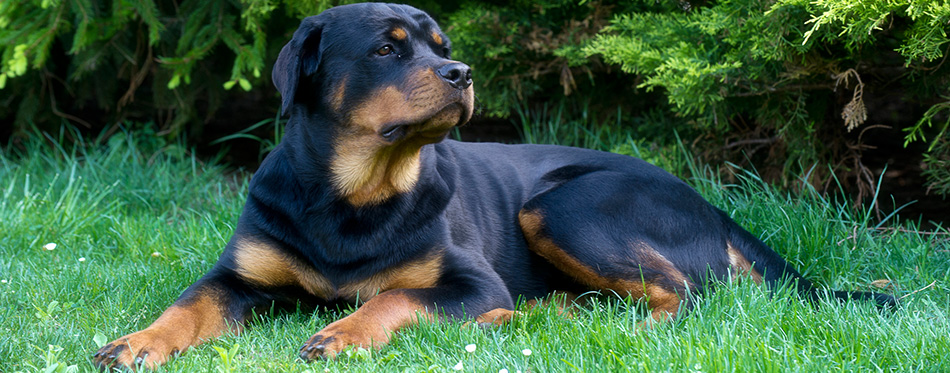
History of the Rottweiler
Not many know that this venerable breed is one of the world’s oldest breeds used specifically for herding. There is this popular story about Rottweilers being the direct descendants of Roman Drover Dogs which were used by the Armies of the Roman Empire to drive and herd flocks of cattle to be butchered and fed to the hungry, battle-weary Roman soldiers. These ancient drover dogs were mastiff-type dogs that were highly valued for their dependability, strength, endurance, resilience, and exceptional intelligence as well as unmatched guarding instincts. One can always think of the ancestors of the Rottweiler to be excellent in herding cattle during the day and guarding them at night when everyone else is already asleep, except for a handful of Roman soldiers as sentries to the camp.
By AD 74, the Roman army marched through the Alps with their cattle in tow and fully herded and guarded by their drover dogs. By the time they reached the southern end of the Alps in what is now present-day Germany, the Roman soldiers set up fortifications and started building a settlement. For the next 2 centuries, the Roman drover dogs showed their mettle in herding and driving livestock, both for the Roman army and the local people.
One of the most important trading centers of the time was the town of Rottweil, nestled between the pristine Swabian Alps and the mythical Black Forest. Cattle ranchers used the Roman Drover Dogs to drive herds of cattle to the Rottweil market while also protecting the cattle from vicious attacks by wild animals as well as from cattle thieves.
In the Middle Ages, these Roman Drover Dogs were used by butchers traveling to the market as their personal bodyguard, protecting them from would-be robbers who are hell-bent on stealing their money pouches. As such, these dogs earned the name “Rottweiler Metzgerhunds” or simply “butchers’ dogs”. It is during this time that the dog known formerly as Roman Drover Dog is now called the Rottweiler.
Sadly, with the advent of improved railway transportation in the second half of the 19th century, there was no longer a need for these guard dogs for moving livestock. In the years before the First World War, interest in the Rottweiler was renewed a belligerents actively sought a dog that can serve as guard dogs, draught canines, ambulance dogs, and messenger dogs.
By January 1914, the very first organization for Rottweiler dog owners was established in Germany. The Deutscher Rottweiler-Klub was organized to produce the best working dogs possible. In April of 1915, the southern part of Germany produced its own Rottweiler Club, the Suddeutscher Rottweiler Klub. In 1921, the different Rottweiler clubs all over Germany including the DTK and the SDRK were amalgamated to create the Allgemeiner Deutscher Rottweiler Klub which is, up to this very day, recognized by the whole world as the Rottweiler breed’s home club.
The American Kennel Club officially recognized the Rottweiler as a breed in 1931. It currently ranks number 8 in the Kennel Club’s registry as of 2017, a rank it now holds for 2 consecutive years.
Quick Facts
Aside from the fact that our beloved Rotties are descendants of the mighty dogs that marched with the mighty Roman Empire, there are a few other interesting facts that you should know about this breed.
- Rottweilers are powerful, large, and stocky dogs that command respect wherever they may venture into. These dogs require not your ordinary dog training and socialization, but rather more advanced and more extensive ones.
- The male Rottie can grow up to 27 inches at the shoulders with a minimum of about 2 feet. Female Rotties are typically smaller by 2 inches at 22 to 25 inches.
- Male Rotties can tip the scale anywhere between 95 and 130 pounds. Female Rottweilers, as always, will usually come in at 85 to 115 pounds.
- Rottweilers can reach 11 years, quite short for this active dog.
- Rottweilers exude with balance, proportionality, strength, endurance, and intelligence.
- It always has a short and straight black coat complete with markings in rich tan color. Surprisingly, Rottweilers have a double coat with the undercoat clearly hidden from view by the outer coat. The outer coat is usually dense and flat, of medium length, and coarser than the undercoat.
- The head of a Rottweiler is relatively broad, especially between the ears. It should never be narrow or have very deep grooves in the frontal bone.
- The nose is broad and well-developed, but never round.
- When the muzzle is observed, it is neither too short nor too long. The standard ratio of muzzle length to skull length is 1 to 1.5
- The back of a Rottweiler is strong, firm, and straight with the loins strong, deep, and short.
- The chest is deep and broad, described as ‘roomy’ by fans of the breed.
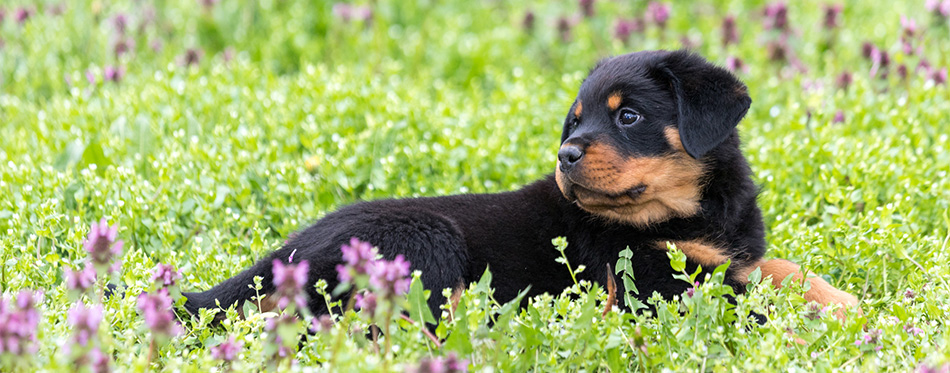
Understanding the Rottweiler’s Personality
Not many people know that underneath this be-muscled four-legged tough guy is a heart of gold. The Rottweiler is undoubtedly strong and it will use this strength to whatever purpose that may serve it or its family best. Yet, there is also a soft and gentle side to the Rottie that very few people see. It may look aloof, snobbish, and downright detached at times, but the Rottie will always maintain its dignified stance when in the company of strangers. Rottweilers are fiercely loyal and protective especially of their families and the little ones that they take under their wing. Unfortunately, this loyalty and protectiveness can be so strong that it is often interpreted by individuals who clearly don’t have any understanding of the true nature of the breed as aggression.
It will play with its family all day long. With those big, hulking muscles and a never-tiring spirit, it’s the human pack that will easily give up after several rounds of rambunctious play in the yard. Whether it’s rough and tumble, one can always expect the Rottie to be the best at what nature designed it to be – a real tough guy with four legs.
The Allgemeiner Deutscher Rottweiler Klub had very strict rules when it comes to breeding Rottweilers to preserve its many fine qualities. Sadly, such strict requirements are not observed in the US, leading to problems in breed temperament and health. This is the major reason why some Rottweilers have been noted to be ‘aggressive’.
As such, a well-bred Rottweiler is always a joy to have in the family. It is fiercely loyal and very trainable. But a poorly-bred and often-maltreated Rottweiler can show the exact opposite. If you really want a Rottweiler that is true to its very nature, you’ve got to be choosy with its breeder.
Energy Levels and Exercise
Modern Rottweilers can be quite difficult to decipher as their levels of activity are directly related to their pet parents. They can be a whirlwind to some while a couch potato to others. But even a Rottie couch potato can still benefit from a 10- to 20-minute daily walk. If your Rottie happens to be on the more active side, its physical limitations are only restricted by your own.
One of the most interesting things about the Rottweiler is that they may have boundless energy when outdoors yet they have somehow learned to manage and temper this excessive energy whenever they’re within the confines of their home. They can be real couch potatoes when indoors. However, be on your guard. Never leave a Rottweiler alone for so long, lest it will show its destructive behavior. As tough as a Rottie is, it never really is tough when left alone for extended periods of time.
Most Rotties love hiking, although ball games are enough for a handful. They are exceptional when on a tracking activity or even as therapy dogs. Yes, these tough guys are excellent partners for individuals longing for some form of relief be it emotional or otherwise; quite the opposite of how these dogs are portrayed in media.
Kid- and Other Dog-Friendliness
Don’t make the mistake of introducing your Rottweiler to a new kid especially if that kid is not well-versed with how to properly pet a dog. The Rottie can be extremely territorial. And if it thinks that its ‘children’ – your kids – are being threatened, it will never hesitate to defend them. It’s a trait that is both admirable and worrisome.
But if you’re able to train your Rottie to be well-behaved around different folks especially during puppyhood, you’ll be rewarded with a dog that gets along just fine with any other kid. However, it is still a must that you never leave children alone in the company of Rotties; you’ll never know if it will interpret child’s play as another child’s act of aggression over your kid – its ‘kid’.
The same is true with other dogs. Generally, you cannot expect a Rottie to be especially friendly with other dogs especially of the same sex and a dog that is relatively new. The Rottie is the boss in its territory. If it perceives that another dog is out to challenge for territory, your Rottweiler is never going to back down.
There is a way, however, to at least minimize such territoriality – training and socialization. The more effective your Rottweiler puppy’s socialization, the better are the chances that its territorial tendencies are somewhat tempered, if not muted. Your Rottweiler will look up to you for guidance and leadership, just as its war dog ancestors did to their Roman generals. Give it time, display undeterred pack leadership, and observe firm supervision when socializing your Rottie puppy with new dogs.
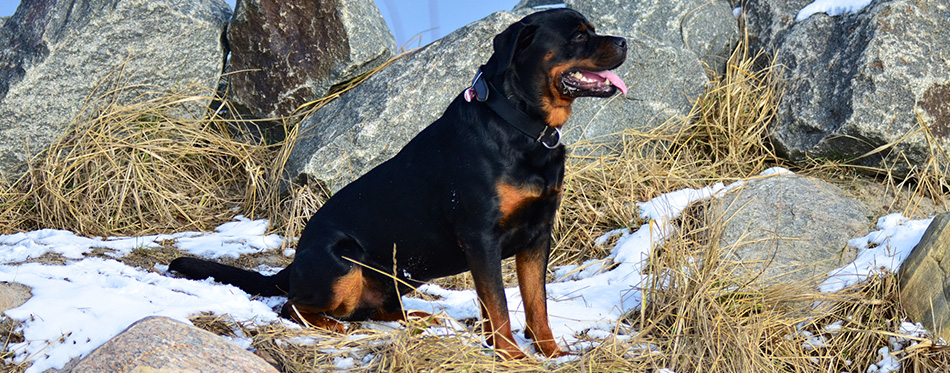
Feeding Your Rottie
You may not like it, but the best food for a Rottweiler is raw food. While the pet-loving community is actually divided when it comes to feeding raw, there’s no denying that this is the closest thing they could ever get to the kind of nutrition that their forebears had even before they were domesticated by man.
If you’re not comfy with giving your Rottie raw diet, then you’ve got to go for the best dog food for Rottweilers that may come in dry, wet or canned, or even semi-moist preparations. Just make sure you’re not giving your Rottie BHT, BHA, rendered fat, wheat gluten, corn gluten, food dyes, and artificial flavorings and colorings. Some commercially-available dog foods are laced with these ingredients so it pays to read the label. Sadly, the text is oftentimes purposely printed very small that you’d need a magnifying glass to read it. Most pet parents no longer read the ingredient list because it only gives them a terrible headache. Don’t! There are other ways by which you can find the ingredients for any dog food product.
Additionally, the best dog food for Rottweilers is one that has a named animal protein clearly listed as its first ingredient. Your best bet is to choose a named animal protein meal such as ‘beef meal’ or ‘chicken meal’ as this has significantly larger proportion of proteins that ‘beef’ or ‘chicken’ alone. Steer clear of dog food that uses poultry or meat ‘byproduct’ meals as you’ll never know what is included in the so-called ‘byproduct’. Furthermore, don’t get dog food that has very vague proteins like ‘poultry’ or ‘fish’ or ‘meat’. There are many species of ‘poultry’, ‘fish’, and ‘meat’ that identifying which one is included in the formulation can be worrisome.
For your puppy, its best nutrition is the milk coming from its mommy. Sadly, it cannot subsist on this forever. As early as 6 weeks of age, your Rottie puppy should already be weaned from its milk. It’s always best to start with wet or canned dog food that’s specially formulated for puppies. We don’t recommend going for dog food brands that are classified for All Life Stages for the simple fact that puppies have different requirements from adults and seniors. Always pick a puppy formulation. Feed your puppy about a quarter of a cup per day, spread in 3 to 4 meals. By the time your Rottie has reached 6 months, you can start feeding it the age- and weight-appropriate amounts twice a day.
Adult Rotties need to be fed twice a day. However, a more important concern is their tendency to overeat and become overweight. There are plenty of resources on how you can determine the daily calorie requirements of your Rottie that takes into consideration its weight, activity level, life stage, and age. Be very vigilant when it comes to feeding your Rottie.
For more guides on choosing the right dog food, you may wish to check out our reviews of the best dry dog food, organic dog food, grain free dog food, wet dog food and food for diabetic dogs.
Training the Rottie
If you’ve been paying attention, your Rottie is an intelligent dog. How else will it be able to perform the many tasks that its Roman generals assigned it? As the Rottweiler Klub in Germany says, a well-bred Rottweiler is bred for work. One of the qualities of a working dog is its easy trainability and high level of intelligence.
Training the Rottie is a lot easier than training a Shih Tzu or even a Beagle. It is number 8 in the world’s list of most intelligent dog breeds. While the Rottie is easy to train, you’ll need consistency and firmness to be successful. Your assertiveness training, if ever you’ve had one already, will be put to the test as this war dog descendant only takes orders from the Alpha. You will also find an unflinching dedication, commitment, and perseverance to be exceptional tools when training a Rottweiler.
Be clear when issuing commands. Make sure you give very specific directions on what you expect your Rottie to do. Otherwise, you’re telling your Rottie that you cannot be trusted in the field of battle. Never bring out the rod and lash at your Rottie if it fails in what it’s expected to perform. Doing so will only instill fear in the Rottie and not really help it to understand what it needs to perform in the first place. Most Rottweiler trainers find the use of a sharp word to be more than sufficient whenever reprimand is necessary.
Don’t wait until your Rottweiler is older before you even start considering training it. While it is true that even old dogs can learn new tricks, you’d have to be more patient, more persevering, and more consistent in your training chores. Ideally, you’d want to begin training your dog as young as 10 to 12 weeks old. And while you’re training your young Rottie, don’t forget to include early socialization as well.
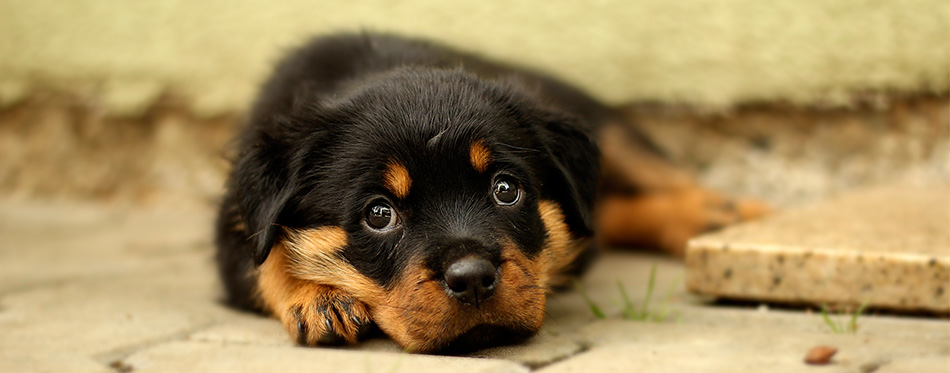
Grooming
Your Rottie may be short-haired, but this doesn’t excuse it from shedding. As soon as Spring and Fall set in, you can expect your Rottweiler to start shedding its hair a lot more profusely than you’d expect. Daily brushing with a dematting tool should help. In other times of the year, weekly brushing with a firm-bristled brush is often enough, although it’s better if you can do it more frequently.
Give your Rottie a much-deserved bath outdoors only on extremely hot days. Otherwise, it’s the bathroom for your pet to minimize hypothermia. Brushing the teeth, clipping the nails, and cleaning the ears all come as routine care for your growing Rottie.
Each grooming session should be viewed as an opportunity to check on your Rottie’s overall health. Checking for signs of soreness, tender spots, rashes, or any other ‘unusual sign’ is the hallmark of a true pet parent.
Check out some of our dog grooming guides, such as dog ear cleaner, dog toothpaste, dog toothbrush, dog shedding brush, dog wipes and dog bathtub.
Health
A Rottweiler may be the tough guy in the dog kingdom, but that doesn’t mean it’s already immune to some of the many health conditions that afflict breeds of its size. For instance, Rotties are known for hip dysplasia and even elbow dysplasia. These can be somehow avoided by supplementing their diet with nutraceuticals containing chondroitin and glucosamine, although being careful about their activities should also help.
Rotties are also prone to gastric dilatation volvulus which can spell the demise of your four-legged guardian if not prevented. Since one of the major factors for GDV is very fast eating, it pays to supervise your Rottie during meals. Alternatively, using a slow-feed dog bowl should do the trick.
Food allergies are also quite common. You can always start with a limited ingredient diet as well as feeding them novel proteins and carbs. This should help minimize triggering the immune system into mounting an allergic response to such food molecules.
Other health conditions that you may have to think about can include aortic and subaortic stenosis and osteosarcoma. It is best to check with the Rottie breeder if any of these diseases are present in the ancestors of your dog.
The Rottweiler is definitely not for everyone. But for those who truly understand the very nature of this war dog-turned-family protector, the Rottie is one gentle giant whose loyalty to its family can never be questioned.
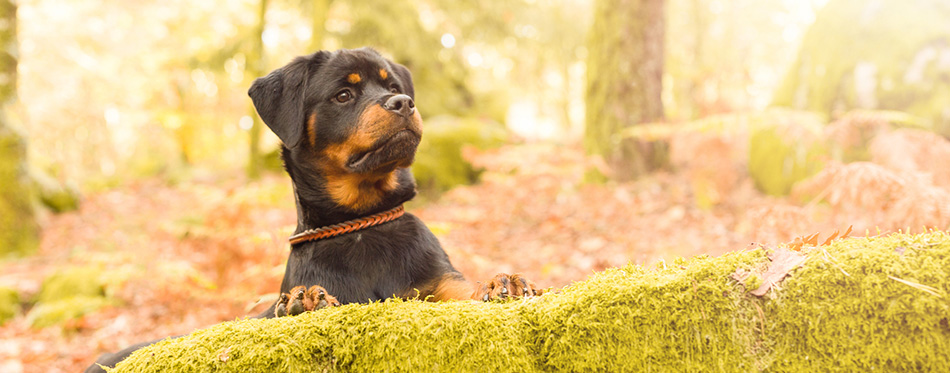
Temperament
A well-trained and well-socialized Rottweiler is good-natured, typically with a very mild disposition. No one can question its obedience, commitment, devotion, and remarkable eagerness to work. Rottweilers always have this stance of nobility whenever they are in the ring. They are always self-assured, fearless, and very stable. Not many know that this breed is one of the most even-tempered dogs around even when alerted to changes in their surroundings.
Its personality is more of the reserved type, not like some toy and small breeds that are never shy showing their pleasure of being your friend. A Rottweiler will not wag its tail (after all, most of them are docked) just to signal its intention of friendship. What it will do is to respond quietly in its own way. It has this wait-and-see attitude that it adheres to in almost every aspect of its interaction with the environment.
The Rottweiler is a family companion, strongly motivated by its desire to protect its human family and home. It is a family guardian of some sort and a general all-purpose canine because of its exceptional intelligence, remarkable adaptability, hardiness, and a strong willingness and eagerness to work. The Rottweiler requires a firm, calm, and stable pack leader; lest, your Rottie will show you how it’s done.
Sources:
- Rottweiler – Washington University in St. Louis
- Rottweiler – AKC

